Book Cancer Treatment in Cuba on Your Own. No middlemen required
Novel Cancer Vaccines: Eligibility, Costs, How to Apply for Treatment
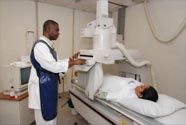 The Cuban pharmaceutical industry hardly uses money for publicity, which in the case of multi-national corporations this activity surpasses the budgets dedicated to doing research. Though Cuba obtains economic revenues from the sales of its products aimed to combat cancer, its research philosophy diametrically opposes the market policies of the big pharmaceutical industry.
The Cuban pharmaceutical industry hardly uses money for publicity, which in the case of multi-national corporations this activity surpasses the budgets dedicated to doing research. Though Cuba obtains economic revenues from the sales of its products aimed to combat cancer, its research philosophy diametrically opposes the market policies of the big pharmaceutical industry.
As a matter of fact big pharmaceutical companies aim their research not to curing diseases, but to developing products for chronic conditions, which are more economically profitable. These diseases usually found in the poorest nations are not object of research, due to their low profitability, and for this reason 90 per cent of the research budget is dedicated to finding out about the diseases that affect only 10 per cent of the world population. Cuba, in terms of world economies at least, doesn't have a lot of resources and so when it comes to its medical advances it has had to be creative, and the CimaVax vaccine is an example of that.
Cuba Cancer Treatment News
First Biotech Joint Venture between Cuba and the U.S. to Manufacture Cuban Cancer drugs
The joint venture was created between the commercial subsidiaries of two renowned research centers: Cuba's Molecular Immunology Center and the Roswell Park Comprehensive Cancer Center of the United States. It will be based in the Mariel Special Development Zone near Havana. The new biotechnology company will include among its products the drug CIMAvax-EGF, a known lung cancer therapy, and three additional immunotherapy treatments for different tumors, developed in Cuba. In its first years, the venture will have as its main objective the development of scientific and clinical research to demonstrate the safety and effectiveness of these novel treatments in the United States. If these studies are successful, the company will be in a position to export these products for the benefit of U.S. patients, once the necessary licenses have been obtained from the U.S. drug regulatory agency.
T-killers destroy a cancer cell. T-killers, or cytotoxic T-lymphocytes, are white blood cells that specialize in the defeat of viruses and tumor cells. In a teaspoonfull of blood there are about five million of them. The way they work is interesting. As soon as T-killer detects a cancer cell, the membrane fingers of the lymphocyte check it. After "identification", the T-killer binds to the cell and injects poisonous proteins (shown in red) into microtubules on its surface. Finally, a white blood cell pierces this surface, allowing the toxic cargo to destroy the cancer cell.
Cuba is constantly working not only on early detection but also on the development of new drugs to treat the disease. According to recent health authority figures, 67% of all clinical research in Cuba today is aimed at the discovery of effective treatments for different types of cancer. Cuban medical and pharmaceutical industry largely aims its research at developing vaccines to prevent cancer and, as a result, lower the people's medication expenses. In 2012, Cuba patented the first therapeutic vaccine in the world against advanced lung cancer, called CIMAVAX-EGF. In January 2013, the island announced the second cancer vaccine, known as Racotumomab (VAXIRA). Clinical tests, carried out in 86 nations, revealed that though these vaccines do reduce the tumors thus improving the quality and expectancy of life of the patients.
CIMAVAX EGF Eligibility
Unlike US lung cancer vaccine the Cuban ones treat advanced lung cancer not only in patients whose tumors express protein called PD-L1. CIMAVAX EGF eligibility, model treatment program costs and average cost of treatment please see here.
CIMAvax does not shrink tumors. The promise is that it can stop cancer cells from growing by depriving a tumor of an important growth factor, thereby delaying the spread of cancer cells. The immune system is the body's built-in defense against an array of disease-causing invaders, such as viruses and bacteria. Vaccines teach the immune system to fight disease by acting like a real infection. The main reason the human body is unable to fight cancer is because it cannot recognize it. This is because cancer cells consist of the patient's own DNA, which the body's immune system recognizes as natural. A third-party agent foreign to the body could unmask those seemingly normal cancer cells, helping the immune system to find and attack them using the immune system's own T-cells. This is its fundamental difference from chemotherapy and targeted therapy.
The idea of using the immune system to attack cancer is not new, and a number of different approaches have been tried without success.
Cimavax has proven to be one of the most effective ways to treat lung cancer in late stages (IIIB to IV).
The vaccine works by targeting the protein called epidermal growth factor (EGF). Many cancers will force the body to produce large amounts of EGF which makes the cells grow and divide and unable to control. Cimavax is partially composed of EGF and tells the body to create antibodies which identify and bind to the EGF stopping it from being able to attach to the receptors of the cancer cells. By doing this, Cimavax will cut off the signal that the cancer sends to its cell to grow and divide which in return will slow down the growth of the lung cancer. The Cimavax vaccine does not prevent lung cancer, but it can change patient's condition from life threatening to a chronic and manageable condition.
Cuban researchers designed the vaccine for non-small cells lung cancer (NSCLC), the most common type. But the concept is applicable to other cancers, such as prostate, breast and colon.
CUBA ONCOLOGY NEWS
80% kids with leukemia cured
In Cuba, there is annually an average of 80 new cases and 75 percent of them are acute lymphoid leukemia (ALL), which is the most frequent in that age group and there is fortunately treatment to cure it, while improvement reaches 98 percent. Cuba has a national network for the treatment of malignant hematological diseases in children and it is distributed in seven institutions over the island, two of them in Havana and the rest in provincial capitals. Results that Cuba shows are also due to the introduction of last generation chemotherapy treatments. Most of the treatments for patients with leukemia are imported, some of them with availability problems, because this disease is very expensive, both for medications and supportive therapy. For Cubans the treatment is totally free; but anywhere else a patient with that condition can annually spend U$ 30,000 to 60,000 that depends on type of leukemia, and if a transplant is included, the cost of treatment would grow extremely higher.
New skin cancer medication available nationwide Heberferon, unique Cuban drug of its kind in the world for treatment of basal cell carcinoma of skin, is already available in national health system. More than 400 patients in Cuba have benefited from the drug produced, which combines the action of two interferons to inhibit tumor growth and eliminate or reduce lesions, including those that are complex, multiple and in advanced stages.
Heberferon, unique Cuban drug of its kind in the world for treatment of basal cell carcinoma of skin, is already available in national health system. More than 400 patients in Cuba have benefited from the drug produced, which combines the action of two interferons to inhibit tumor growth and eliminate or reduce lesions, including those that are complex, multiple and in advanced stages.
Cuban researchers explain that although the evaulation period can be considered short, a favorable impact on the quality of life of patients with the most frequent tumors was evident with the use of Heberferon. Among most encouraging results is the possibility of reducing the need to mutilate sections of skin in places as complicated as the head, when carcinoma is located near vital orifices such as eyes, nose, mouth and ears, or when it has a wide extension. A finding that will allow the extension of the research lines is the systemic effect that it causes, that is, it works not only around the lesion but also at an organic level, with benefits for patients with multiple carcinomatosis and extended lesions.
How to Book Cancer Treatment in Cuba on your Own
Cancer treatment in Cuba can be easily booked by any international patient on his own. One just needs to know which hospital to turn to for direct talk. If you are considering a medical or surgical procedure in Cuba please keep in mind that the best way to start is to get in touch with Cuban clinic directly to schedule a consultation or get a free assessment.To get the right hospital contact data please refer to CARIBEMEDICA.COM
Need the right clinic contact data right now? Click "Buy now" button to DOWNLOAD the right Cuban clinic full contact data FILE.
Cancer Treatment and Surgery, Vaxira Treatment Cuba Contacts EUR 5.- ONLY (U$ 5.49, CAD 7.50)

Cuba Cancer Colorectal/Cervical/Kidney Contacts (Minimal Access Surgery) EUR 5.- ONLY (U$ 5.49, CAD 7.50)
OR DROP US A LINE drcubamd@gmail.com Please note also there is new separate topic for minimal access surgery colorectal cancer, cervical cancer and kidney cancer.
In 2015 Buffalo Roswell Park Cancer Institute struck a deal with Havana Center for Molecular Immunology to bring into the U.S. for study two vaccines developed at the Cuban organization – CIMAVAX EGF and Racotumomab.
Candace Johnson, Roswell Park's chief executive officer described CIMAvax as a vaccine with an "ingenious design" that arose out of necessity in Cuba as a result of meager research budgets. Roswell Park, as part of the agreement with Havana Center for Molecular Immunology, will prepare and file an investigational new drug application with the Food and Drug Administration to gain approval for testing of CIMAvax in the U.S.
In addition to CimaVax, Roswell Park is also investigating Racotumomab and VSSP — two more promising cancer drugs invented by Havana Center of Molecular Immunology. Racotumomab targets a molecule that scientists believe is found on all cancer cells, which means the drug could one day be effective against blood cancers as well as the solid tumors that accompany diseases like lung, breast, prostate and colon cancer. VSSP, originally designed as a compound to help boost the immune response to vaccines, also appears to enhance the anti-cancer immune response. These drugs aren't as fully developed as CimaVax but they appear to have great potential.
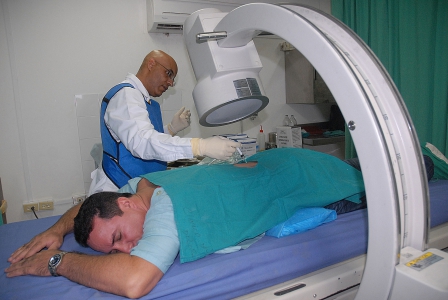 A trial of the vaccines in Cuba for patients who failed chemotherapy and radiation found that it significantly increased life expectancy, and larger studies are underway in Cuba and other countries. The vaccines also appear to have few side effects and are inexpensive to produce. The potential improvement in survival in late-stage cancer patients is a matter of months. However the process of larger studies in the US will take years.
A trial of the vaccines in Cuba for patients who failed chemotherapy and radiation found that it significantly increased life expectancy, and larger studies are underway in Cuba and other countries. The vaccines also appear to have few side effects and are inexpensive to produce. The potential improvement in survival in late-stage cancer patients is a matter of months. However the process of larger studies in the US will take years.
Of corse it's not a miracle cure but this is an interesting vaccine because of its novel approach. And, because it has such mild side effects, the possibility of using it for prevention is exciting.
Chemo, Radiation and along Traditional Cancer Treatment in Cuba
Along with these vaccines, natural and traditional medicine and other alternative medicinal practices have been introduced for years in the island's health sector. In Cuba one can get access to hundreds of advanced clinical studies and techniques not available in other countries, including the latest techniques. And the costs are comparatively affordable.
IMRT: Cuban hospitals are among the pioneers to offer IMRT (Intensity Modulated Radiotherapy) to the patients. Special type of radiotherapies like Whole Skin Electron Irradiation or Whole Body Irradiation too are carried out. These are carried out in support of the treatment of Leukemia or Skin Lymphoma patients. IMRT is an enormously powerful tool in experienced hands of expert radiation oncologists. Several forms of HPI are being used at Cuban hospitals. The latest development is modulation of radiation intensity with Multi leaf Collimator.
While the FDA stalls on approving cancer treatments available in Cuba with great success, let us introduce you to the latest techniques being used in Cuba.
Medical Oncology
Affordable chemo and radio treatments.
Surgical Oncology
Complicated and delicate tumor excisions, Brachytherapy, In addition to intra-cavitary and intraluminal treatments. Cuban hospitals use the Iodine 125 permanent Seed Implant Technique using RAPID strand.
Several Cancers CONVENTIONAL SURGERY AND MICRO-SURGERY PROGRAMS COSTS Please see here
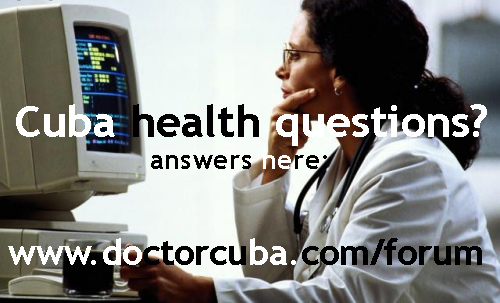
Stereotactic Radiosurgery and Radiotherapy
A non-invasive radiation technique employed to treat various types of intracranial lesions like arteriovenous malformation, meningiomas and acoustic schwamins. This is usually done where risks of open surgery offer unacceptable odds. Linear accelerator assisted stereo tactic radio surgery is a widely accepted form of treatment and is extremely cost-effective. Through this procedure deep seated lesions can be identified, visualized, analyzed and treated precisely.
Bone Marrow Transplantation:
Bone marrow transplants have been performed to treat conditions like acute myeloid leukemia, lymphatic leukemia, myeloma and Hodgkin's disease. Cuban hospitals have performed hi-tech BMT with 80 dedicated beds, the largest in the continent. The BMT units perform both allogenic and auto logous BMTs.
Cord blood cell transplantation:
Utilizing umbical cord blood in the treatment of leukemia and post cancer surgery.
Stem cell based cancer treatments:
Major oncology hospitals send patients overseas and build oncology centers abroad so that their patients can have this promising treatment. In Cuba one can obtain this treatment affordably.
BRAIN TUMOUR SURGERY

Gamma Knife Surgery for a lot less. In Cuba one can also get access to hundreds of clinical studies and techniques not available in other countries, including the latest technique in brain cancer:
Brachytherapy
Diptheria therapy
Breast Cancer
Oral Cavity Cancer
Cervical Cancer
Things To Look Out For In Cancer Research In 2020:
Immunotherapy. Who will respond, who won't respond and why?
Immunotherapy is now seemingly everywhere, with several treatments approved for various cancer types, including CAR T-cells, immune checkpoint inhibitors and more in development such as tumor infiltrating lymphocyte (TIL) therapy. TILs successfully cleared all tumors from a woman with metastatic breast cancer, in a research breakthrough which was one of the most reported in 2019, but as of yet, TILs have not been proven in larger-scale clinical trials.
Over 2,500 trials using immunotherapy are now registered worldwide, but as the use of these treatments grows, there are still major questions to be answered. One particularly important to the use of immune checkpoint-blocking drugs such as those which target PD-1 or CTLA-4 is 'why do some patients respond whereas others do not?' Several research teams worldwide and in Cuba are currently grappling with this question, which is unlikely to have a single, clear answer, but we expect to see much more research published on this in 2019, which will hopefully start to benefit patients by identifying who will and won't respond to these expensive drugs.
Liquid biopsy tests. More clarity on precisely what they do and more evidence that they do it accurately.
The promise is that eventually, we should be able to diagnose cancer with a simple blood test—earlier, more cheaply and even more accurately than we currently do. Research has suggested we could even use these tests to monitor the response of tumors to cancer treatment and when and if the tumor returns. However, the number of research papers, presentations at top conferences and news releases by the dozens of companies currently developing these technologies can make it a little overwhelming to figure out what is going on. In 2019, two of the top liquid biopsy tests on the market had their efficacy called into question with researchers suggesting that the two competing tests gave different results with the same patient samples. A claim which was then challenged by representatives from both companies. Liquid biopsy tests undoubtedly have huge potential and may indeed live up to their hype, but currently, the field is a little messy and difficult to understand for scientists, patients and oncologists who are not specialists. The American Society for Clinical Oncology (ASCO) issued a statement in March of this year essentially concluding that for most liquid biopsy tests there is currently not enough evidence to recommend their use in either the diagnosis or monitoring of cancer. Hopefully, 2019 brings greater clarity about how these tests can fit into the diagnosis and care of people with cancer and ASCO will be able to review their stance accordingly.
Prostate Cancer Treatment in Cuba
According to recent scientific studies, the most important risks for prostate cancer are genetic predisposition and racial predisposition. A man having one first degree male relative with prostate cancer increases their risk by 2-3, having 2 first degree relatives with prostate cancer increases their risk by 4-6. In Cuba nowadays there are a number of alternative treatments to surgery in both the malignant enlargement of prostates and prostate cancer. Cuban scientists are drafting the protocols for the third phase of clinical trials of Heberprovac vaccine what is a potential treatment for advanced prostate cancer. Meanwhile any optimistic expectations must be put into perspective.
When urinating problems deteriorate patient's quality of life urologists can recommend a number of different options depending on the degree of the problem. In prostate cancer other approaches like "Monitoring while waiting" and "Active monitoring" can be implemented depending on the person's age, other health problems and life expectations. But decisions on these options can only be made with the informed consent between Urology Specialist and patient.
EARLY DIAGNOSIS IS CRUCIAL FOR TOTAL RECOVERY IN COLON and RECTAL CANCER
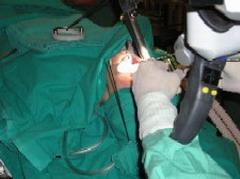 Colorectal cancer, which becomes more common type of cancer as people's lifestyles gets more modern, ranks third among the most common cancers throughout the world. Early diagnosis saves lives in rectal cancer; when the disease is detected while it is at stage 1 and surgically treated right away, it is possible for the recovery rate to reach 100%.
Colorectal cancer, which becomes more common type of cancer as people's lifestyles gets more modern, ranks third among the most common cancers throughout the world. Early diagnosis saves lives in rectal cancer; when the disease is detected while it is at stage 1 and surgically treated right away, it is possible for the recovery rate to reach 100%.
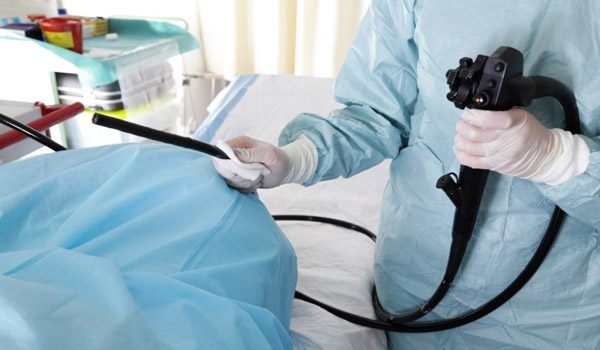 Colorectal cancer has been becoming more and more common due to unhealthy diets, inactivity, excessive weight, harmful habits and stress. Some cancer types have been drawing attention with the speed of the increase in their rates of incidence. Rectal cancer is also one of these! The lowest section of the large intestine, of which the length is 12 to 16 cm, is referred to as the rectum and the malign tumors which originate in this area are collectively referred to as rectal cancer. Rectal cancer is slightly more dangerous than large intestine tumors. Unhealthy diets and environmental factors are among the primary risk criteria for rectal cancer and excessive meat consumption, high amount of fatty foods in diets and insufficient consumption of fruits, vegetables and high-fiber foods pave the way to rectal cancer. Development of rectal cancer can also be due to genetic factors, diseases such as ulcerative colitis and treatment methods applied for other cancers. Several factors are associated with the early detection of this disease, as patients are often unaware of digestive symptoms, which they ascribe to other problems and therefore take too long to seek medical help. Sometimes they even refuse to undergo important studies and procedures such as colonoscopies, so by the time a malignant lesion is detected it is already at an advanced histological stage and prone to serious complications.
Colorectal cancer has been becoming more and more common due to unhealthy diets, inactivity, excessive weight, harmful habits and stress. Some cancer types have been drawing attention with the speed of the increase in their rates of incidence. Rectal cancer is also one of these! The lowest section of the large intestine, of which the length is 12 to 16 cm, is referred to as the rectum and the malign tumors which originate in this area are collectively referred to as rectal cancer. Rectal cancer is slightly more dangerous than large intestine tumors. Unhealthy diets and environmental factors are among the primary risk criteria for rectal cancer and excessive meat consumption, high amount of fatty foods in diets and insufficient consumption of fruits, vegetables and high-fiber foods pave the way to rectal cancer. Development of rectal cancer can also be due to genetic factors, diseases such as ulcerative colitis and treatment methods applied for other cancers. Several factors are associated with the early detection of this disease, as patients are often unaware of digestive symptoms, which they ascribe to other problems and therefore take too long to seek medical help. Sometimes they even refuse to undergo important studies and procedures such as colonoscopies, so by the time a malignant lesion is detected it is already at an advanced histological stage and prone to serious complications.
MODEL THERAPY COSTS FOR THE CANCER OF HEAD AND NECK WITH MONOCLONAL ANTIBODIES. (NIMOTUZUMAB)
Hospitalization (4 nights)
Hospitalization in private room category I (Inc. Feeding and nursing attention)
Attention of the physician assistant to hospitalized patient. (It includes visit of the physician)
Initial evaluation and making of medical history
Consultations
Consultations with specialist of Stomatology
General Consultations with Podiatry
Researches
Hematological and Hemochemical Researches
Finished hemogram
Sedimentation speed
Complete Coagulogram
Glycemia
Creatinine
Uric acid
Urea
TGO
TGG
GGT
Alkaline Phosphatase
Quantitative Serology (VDRL)
Antibodies test against the VIH-1/2
Imagery Researches
Radiography of Thorax
Therapy with monoclonal antibodies and other medicines
Chloride of Sodium
Vaccine NIMOTUZUMAB (24 bulbs)
Zofran
Transportation in-out
Medical report, conclusions and recommendations
Price: 21 183,60 CUC
Notes: Accompanist's accommodation with feeding 40 CUC daily. There are excluded other medicines that are not contemplated in the program, disposable material, blood, derivatives or its substitutes.
